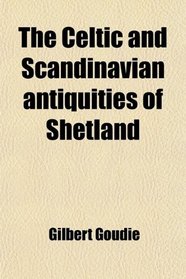Search -
The Celtic and Scandinavian antiquities of Shetland
The Celtic and Scandinavian antiquities of Shetland
Author:
Purchase of this book includes free trial access to www.million-books.com where you can read more than a million books for free. This is an OCR edition with typos. Excerpt from book: THE CELTIC AND SCANDINAVIAN ANTIQUITIES OF SHETLAND. THE PAGAN PERIOD IN THE STONE, BRONZE, AND EARLY IRON AGES. We have no reliable evidence of the exist... more »
Author:
Purchase of this book includes free trial access to www.million-books.com where you can read more than a million books for free. This is an OCR edition with typos. Excerpt from book: THE CELTIC AND SCANDINAVIAN ANTIQUITIES OF SHETLAND. THE PAGAN PERIOD IN THE STONE, BRONZE, AND EARLY IRON AGES. We have no reliable evidence of the exist... more »
ISBN-13: 9780217070133
ISBN-10: 0217070132
Publication Date: 8/8/2009
Pages: 266
Rating: ?
ISBN-10: 0217070132
Publication Date: 8/8/2009
Pages: 266
Rating: ?
0 stars, based on 0 rating
Publisher: General Books LLC
Book Type: Paperback
Other Versions: Hardcover
Members Wishing: 1
Reviews: Amazon | Write a Review
Book Type: Paperback
Other Versions: Hardcover
Members Wishing: 1
Reviews: Amazon | Write a Review
Genres:




